Wonder Bread
There are few bread products that are iconic as Wonder Bread. Nearly everyone around the world has heard of Wonder Bread, and it is often the precise kind of white bread that people think about when they are asked to explain what white bread is. This was the first bread to be sold pre-sliced nationwide in the US, and the product has been around since 1930. Few other bread companies can boast of such a long life for any of their products.
Wonder Bread was even sold using the same logo up until 2005, making the colorful and simple logo for the product almost as well-known and recognizable as the bread itself. This bread was a staple in most American homes for many years until other pre-sliced breads entered the market.
Please leave a review or any memories of this snack in the comments at the bottom of this page. Thank you!
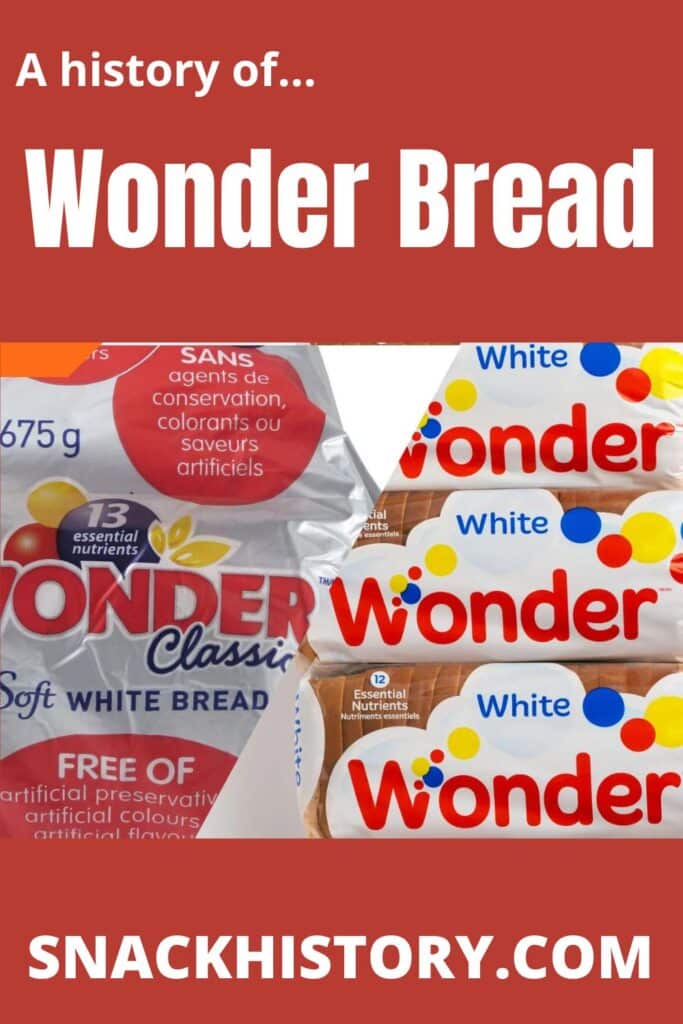
History
Until the 20s, breadmaking was a job that women did in nearly every home around the world. This was not a vastly time-intensive process, but if you were busy raising lots of children or working in a factory, it became a task many women could barely keep up with. Buying bread from a local bakery was not a realistic option for most people due to the cost. Something needed to change since this product was one of the staples of many people’s diets in the US and the UK.
The Taggart Baking Company in Indiana was the original producer of Wonder Bread. The bread debuted in 1921 after a blind promotion that just stated that, “a wonder” was coming out on that date. The logo, with its colorful bubble circles, was thought up by the merchandising developer, Elmer Cline, who had just watched the International Balloon Race in Indianapolis. He said that the sight of all of the colorful balloons floating in the air had filled him with a sense of wonder as well.
The logo that Cline designed was very simple and stated the name of the bread, “Wonder” in capital letters in bright red. The bubbles above the brackets around the word wonder were yellow, blue, and red. This very simple design would be used by the company until 2005, making it one of the longest-running logos to ever grace any food item produced in the US.
Continental Bake Company bought Taggart in 1925, and this immediately caused Wonder Bread to become a national product for the first time. The company added the words, “It’s slo-baked” to the logo. They then began selling the product in new markets until it was finally marketed nationally in 1930.
This pre-sliced bread concept was entirely new to Americans at the time. It was incredibly novel to consumers to buy bread that had been sliced for them already. The company stressed that the “wonder-cut” process made for evenly sliced bread that would not dry out to help confront consumer fears that the bread would grow stale while it was waiting to be purchased in stores.
Pre-sliced bread was actually not invented by the maker of Wonder Bread, even though people falsely attribute this ingenious idea to Wonder Bread and its brand. A man named Otto Rohwedder actually made the first bread-slicing machine which made the process of pre-slicing loaves even easier. He began selling this machine in 1928, having shared the invention with others in the baking industry while he was waiting for patents and other approvals to start selling the invention himself.
He never gets the credit for this invention either, as Wonder Bread once again is credited for inventing this slicing machine. Wonder Bread actually sold its own slicing machines in the early years of the company when this process was still novel and unique.
During the years of World War II, sliced bread was discontinued by all manufacturers for a few months. However, there were complaints about this change, and slicing was put back into the preparation process a few months later. There were various accommodations that various industries made to help adjust to the wartime demands for workers, products, and supplies, but this was one of the few bans to be rolled back or lifted so quickly.
Shortly after the war, Wonder Bread began to have vitamins and minerals added to it. This was due to the efforts of the US government to enrich white bread to help with dietary shortfalls related to over-farming in the Midwest. This was also done in an effort to fight a variety of diseases that were linked to malnutrition.
Wonder Bread was the first company to display open dating and nutrition information on its product packaging as a result. They even ran ads to help explain the benefits of this change on Howdy Doody. Buffalo Bob Smith told audiences that Wonder Bread helped to “build strong bodies in 8 ways”. This was in reference to the 8 additives that had been included in the recipe as a result of the enriching initiative. During the 60s, 12 ingredients were added to the enriched flour in Wonder Bread, and the slogan was adjusted to indicate that there were 12 vitamins included, not 8.
During the 80s, when calories were being counted for the first time by those dieting and sugar-free and low-fat foods landed on the shelves of stores around the US, Wonder Bread began to be sold in a “Light” bread version as well.
In 1995, Hostess Brands bought Continental Baking. The company was actually known as Interstate Bakeries Corporation at this time. However, shortly after this acquisition, the company declared bankruptcy. Wonder Bread production was at risk of being halted for the first time since the 1920s.
However, Interstate Baking was able to be saved from bankruptcy, and the business leaned on Wonder Bread to help get the company out of trouble. Wonder Bread began being made with whole grain white bread flour to help appeal to customers who wanted more nutrition in their sandwich bread but didn’t want to give up the taste of white bread. This did not help lagging Wonder Bread sales, however, and in 2007, the company decided to end production of wonder bread.
This was partially due to issues with the California market which was getting the loaves of Wonder Bread first due to the location of the plant creating the bread. These markets were interested in “premium” brands, and they thought of Wonder Bread as a low-rent product without much nutritional value.
Wonder decided that they would need to save the Wonder Bread product through advertising changes and another shift in the product’s ingredients. The Wonder Classic loaves and Wonder Classic Sandwich bread loaf recipes were changed to include 30% of the daily recommendation for calcium. Wonder also made sure that the Wonder Whole Wheat loaves became recognized by WIC in many states around the US.
Advertising and promotion connected Wonder Bread once again with family-friendly nutrition, and the company donated thousands of loaves of bread to the San Diego Food Bank and Los Angeles Regional Food Bank. The company’s new slogan for Wonder Bread was, “Always Wonder”. These efforts appeared to save the products from extinction for a time, but in 2012, Wonder Bread was again scheduled to be taken off the shelves of stores in the US due to another declaration of bankruptcy by Hostess Brands.
Flower Foods ended up buying several of the bread products and bakeries that were involved in the bankruptcy, including Wonder Bread. In 2013, after being off the shelves of stores for a while, Flower Foods brought Wonder Bread back to the consumer market again. Consumers who have always loved this bread product and the fact that the recipes have not changed much since the 1920s makes this bread product really remarkable.
Ingredients
From the Wonder site:
- Enriched Wheat Flour
- Water
- Sugar
- Soybean and/or Canola Oil
- Yeast
- Salt
- Defatted soy flour
- Wheat gluten
- Calcium propionate
- Sodium stearoyl-2-lactylate
- Sorbic acid
- Vegetable monoglycerides
Nutrition
| Serving Size: | 1 slice (1.3 oz) (37g) | % Daily Value* |
| Amount Per Serving | ||
| Calories | 98 | |
| Total Fat | 1.2g | 2% |
| Saturated Fat | 0.3g | 1% |
| Trans Fat | 0g | |
| Polyunsaturated Fat | 0.6g | |
| Monounsaturated Fat | 0.2g | |
| Cholesterol | 0mg | 0% |
| Sodium | 180mg | |
| Total Carbohydrates | 18g | 7% |
| Dietary Fiber | 1g | 4% |
| Sugars | 2.1g | |
| Protein | 3.3g | |
| Vitamin D | 0mcg | 0% |
| Calcium | 53mg | 4% |
| Iron | 1.3mg | 7% |
| Potassium | 46.4mg | 1% |
| Caffeine | 0mg |
- The % Daily Value (DV) tells you how much a nutrient in a serving of food contributes to a daily diet. 2000 calories a day is used for general nutrition advice.
Marketing
Wonder Bread has always been marketed with an eye toward families and children. From fun and engaging cartoon billboards in the early years of the bread’s life to clever kid-centric and mom-friendly ads in the 50s and 60s, Wonder Bread has always made the most of its palatable recipe and approachable nature.
Once the novelty of slicing the loaves wore off, it was time to up the ante for the company to make sure that consumers didn’t forget what the company stood for. Since the original logo was connected with hot air balloons, in 2001, the company commissioned its own hot air balloon with the Wonder Bread logo splashed across it.
Social media is also used to market the brand today, associating marketing of the product with the hashtag, #SpotTheWonder. These kinds of clever little ploys have kept the brand fresh and responsive to customer demands despite the various times that the product has slipped off supermarket shelves due to the bankruptcy struggles of Hostess Brands.
Logo
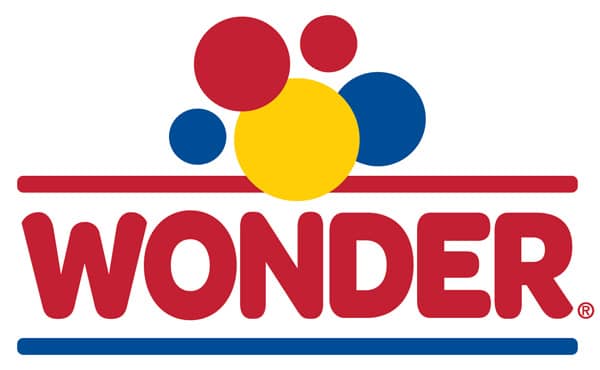
Pictures
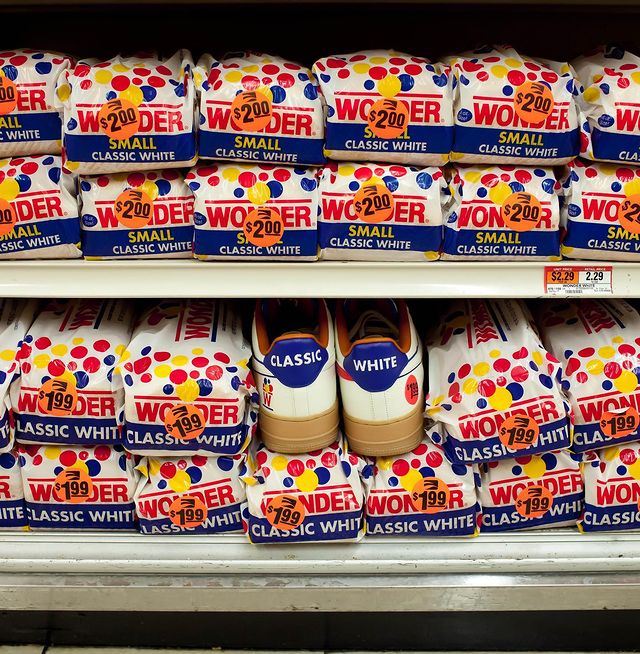
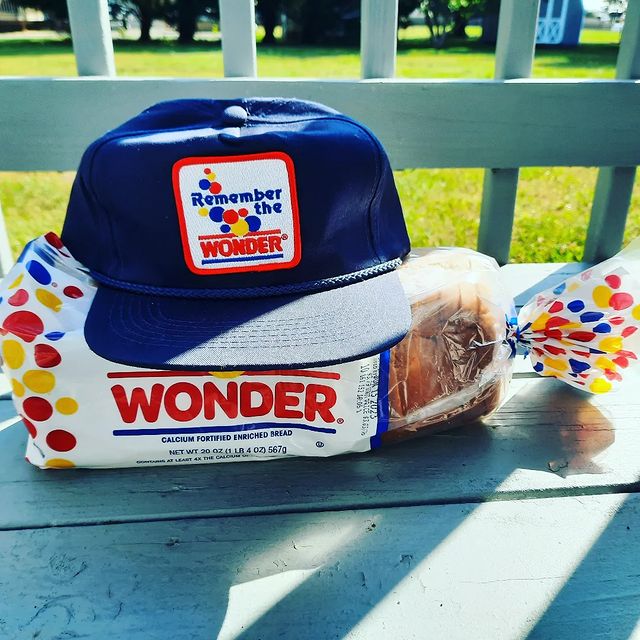
Ads:
Ad from the 1960s for Wonder Bread:
A survey of ads for Wonder Bread throughout the decades:
A 50’s commercial:
FAQ
Who owns Wonder Bread?
Wonder Bread is currently owned by Flowers Foods in the United States.
Where is Wonder Bread made?
Wonder Bread is manufactured in Mexico, Indiana, Pakistan, Australia, and Canada.
Jason has been a snack addict since his early years and now enjoys nothing more than reviewing his favourite candys and sweets.
Please leave a review or any memories of this snack in the comments below. Thank you!
Click here for a full A-Z list of Snacks and Candy
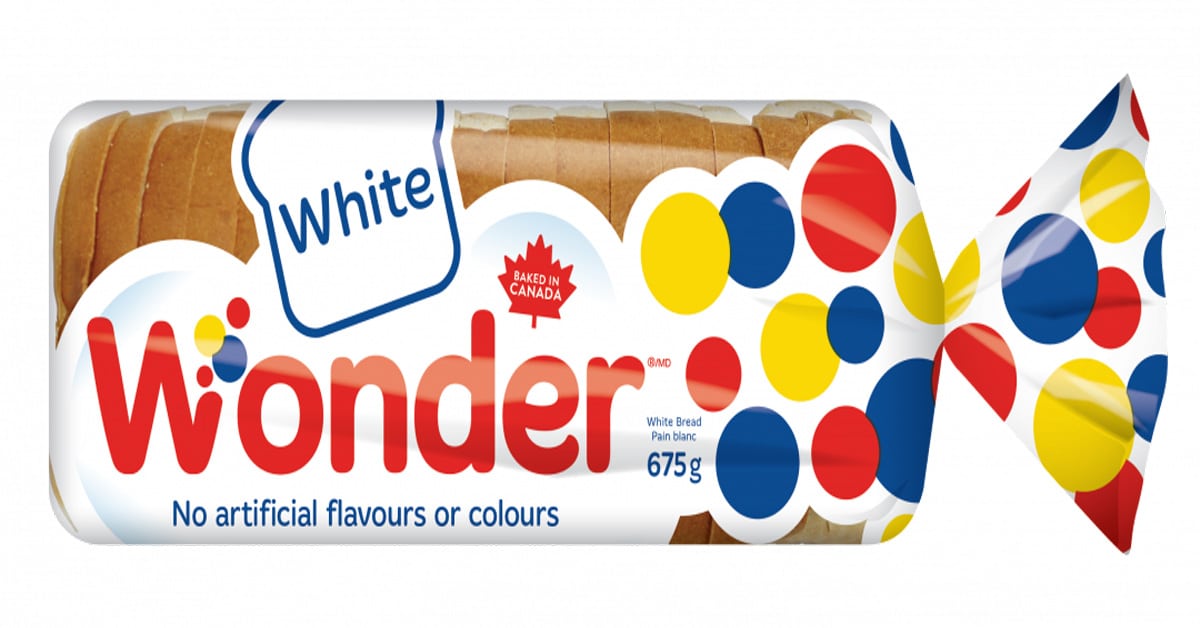
I grew up on Wonder Bread and I was researching to see if the ingredients of the bread today or the same as what I eat in the 60s and 70s. I will no longer by Wonder Bread because I see most of it is manufactured outside of the United States of America.